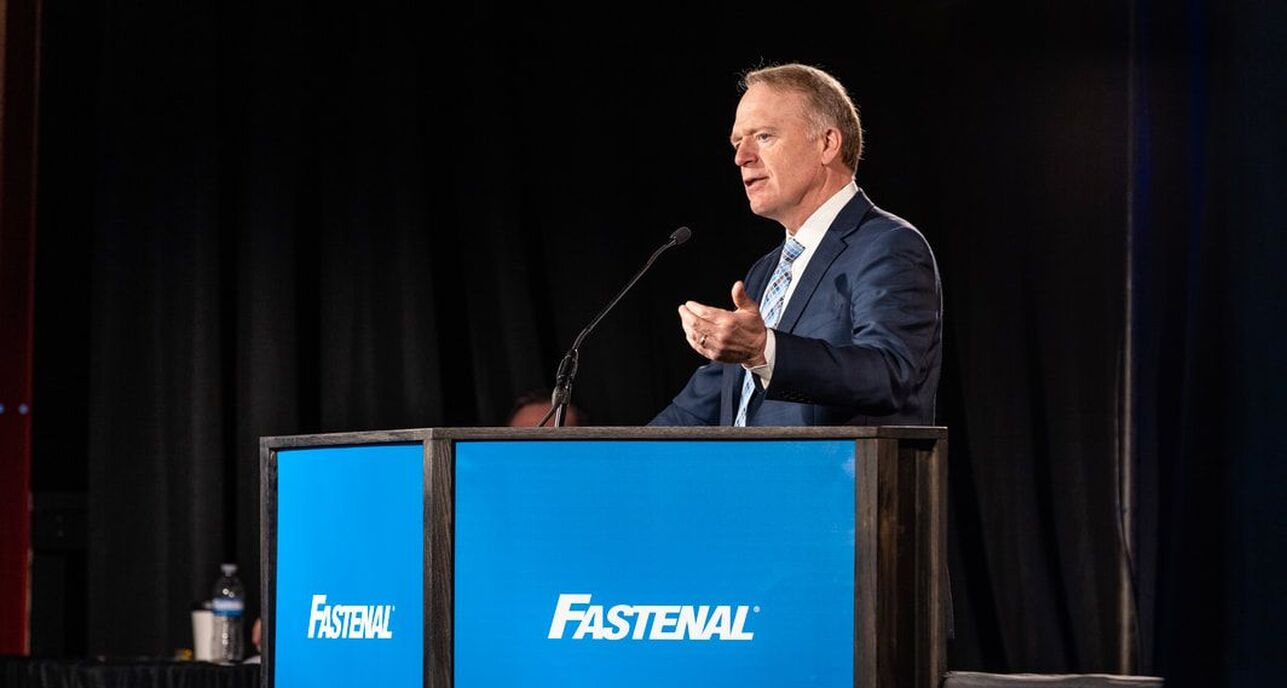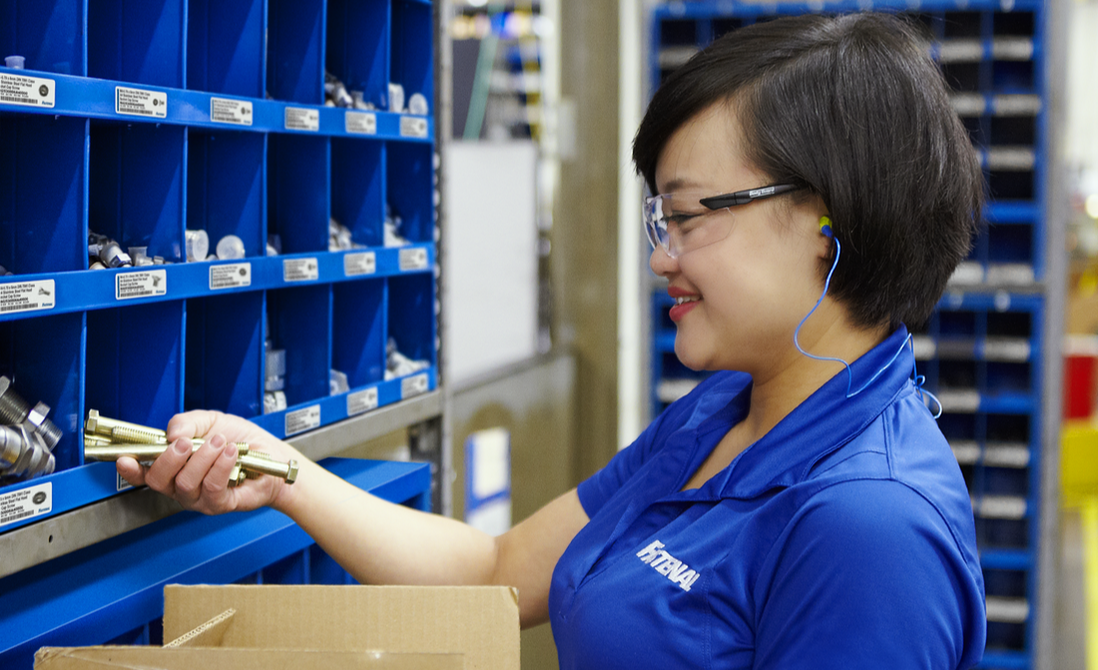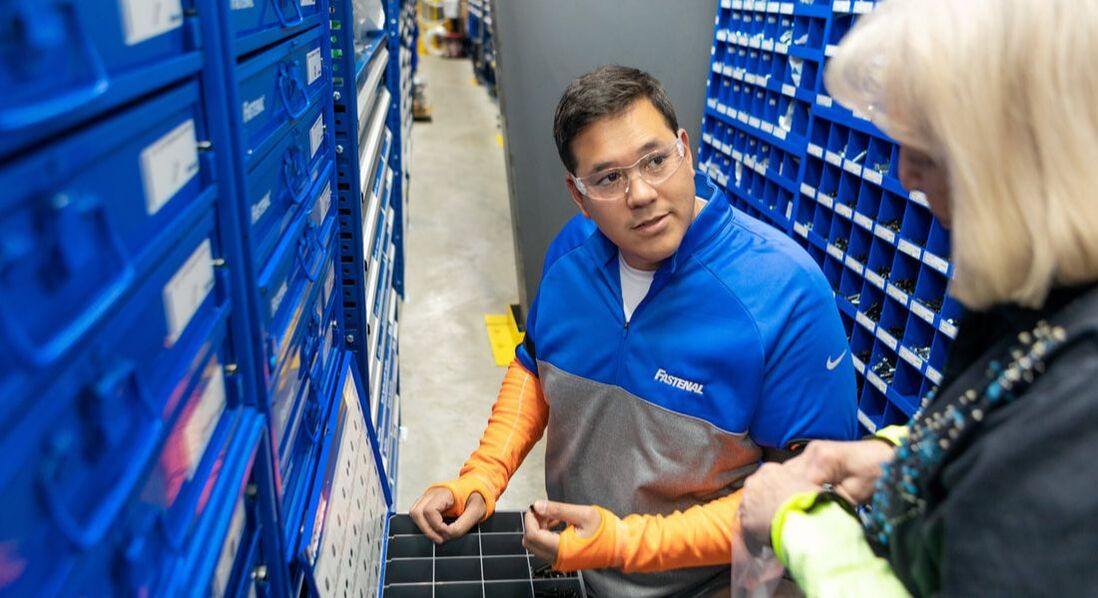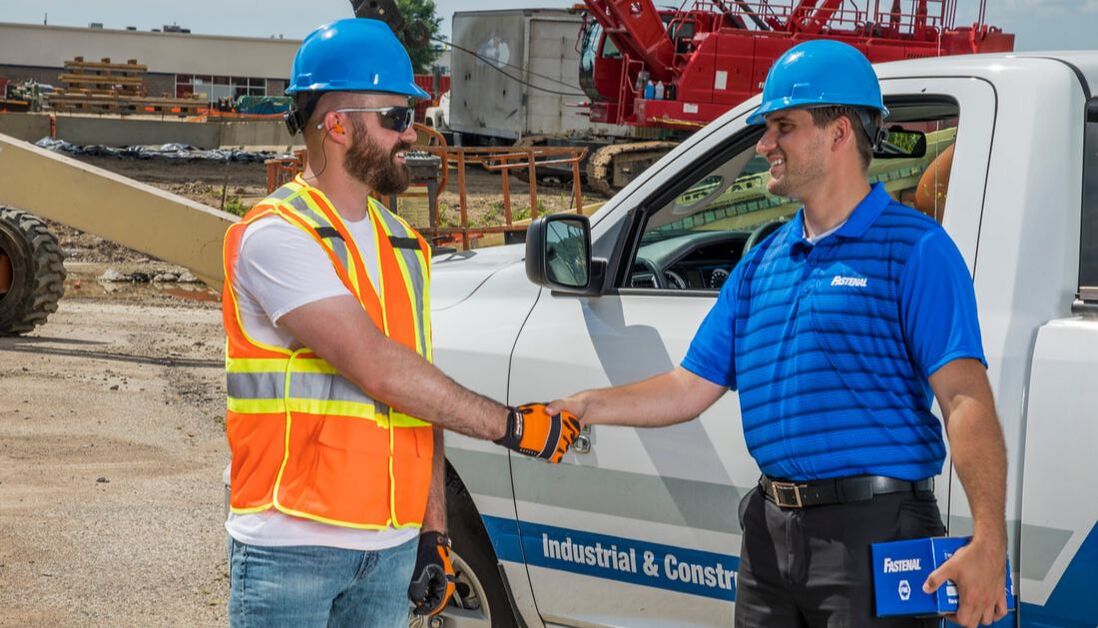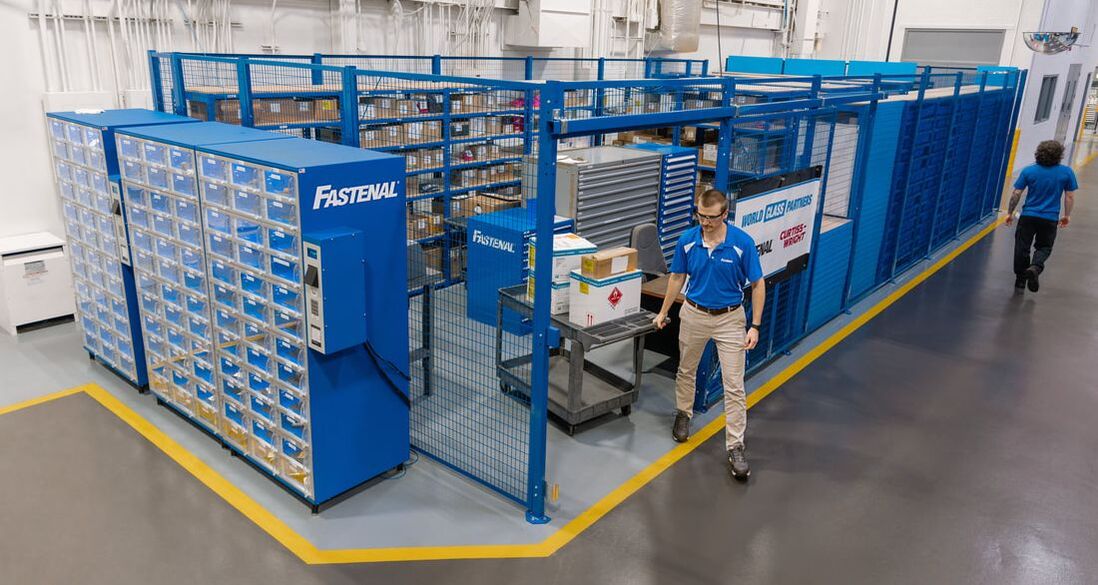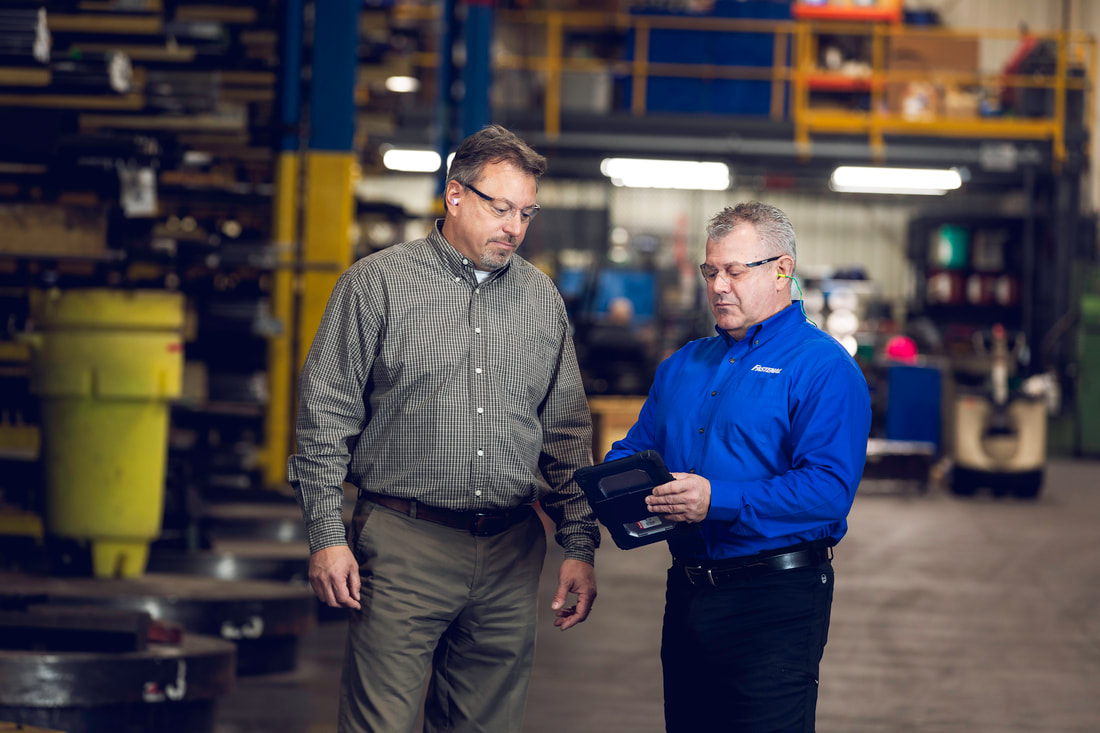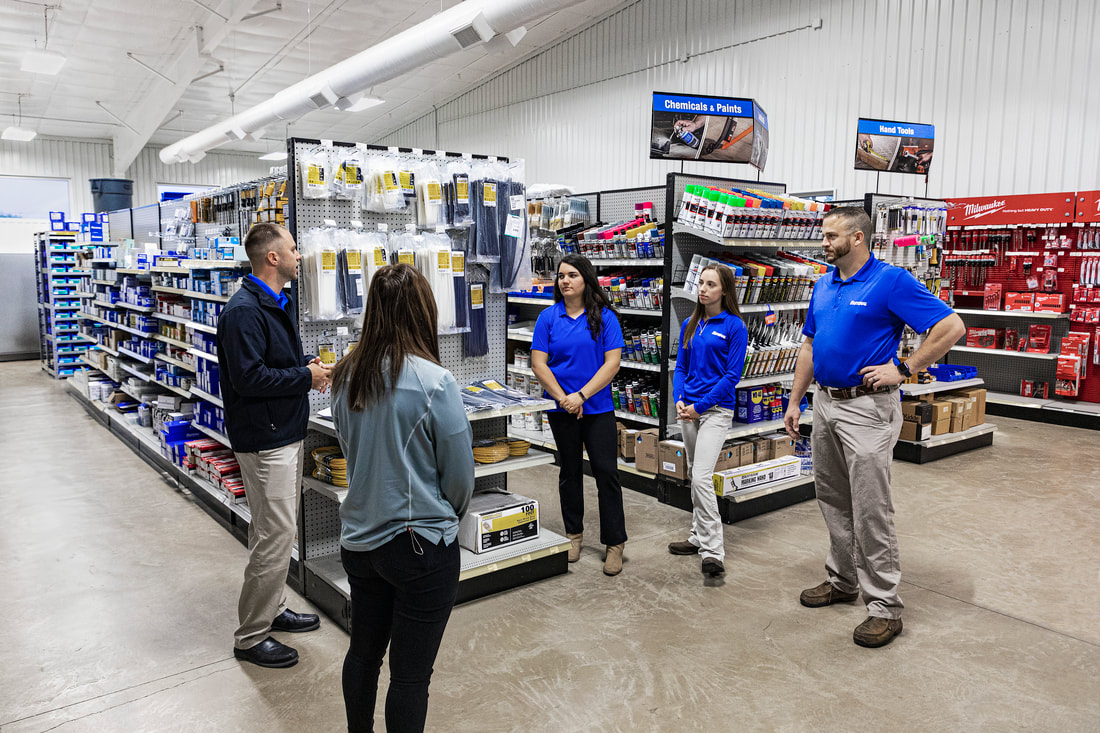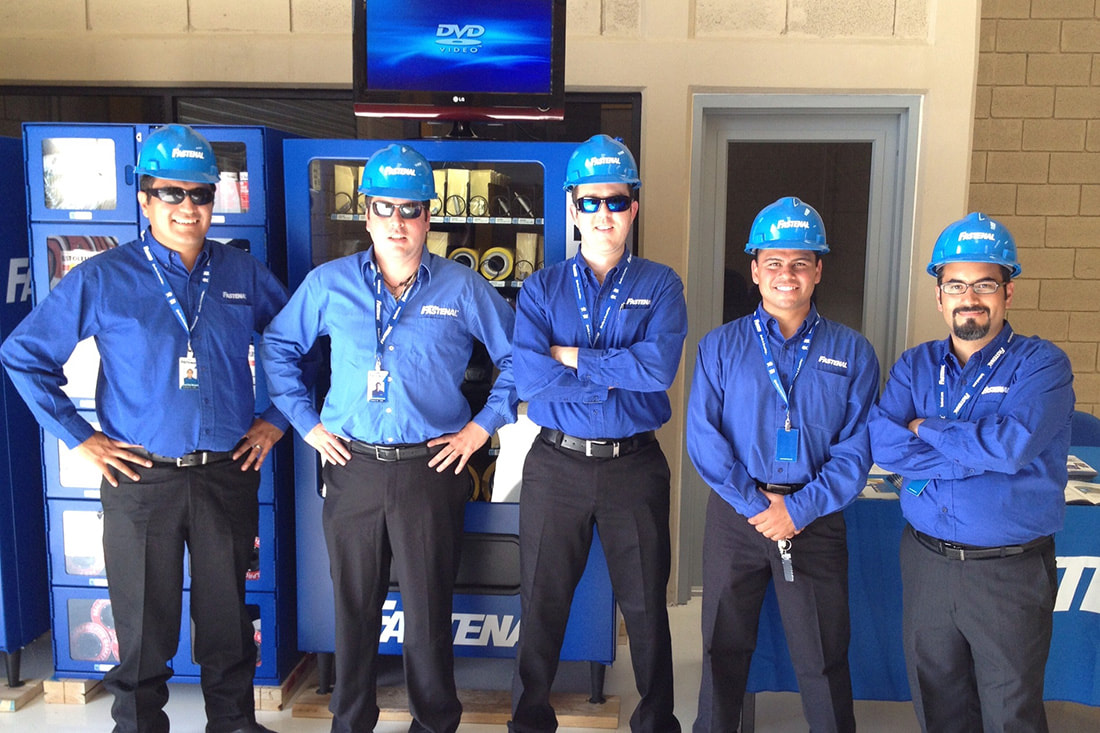CEO Dan Florness on supply chain partnerships
November 8, 2023
By Blue Print Editorial Team
By Blue Print Editorial Team
|
We sat down with Fastenal’s president and CEO to discuss what it means to be a supply chain partner for your business. As we learned, it involves a lot more than filling orders and shipping boxes.
Some people may still think of Fastenal as a “fastener company” or a “vending company” or, more broadly, as a distribution company. How would you like people to perceive Fastenal? We're a supply chain company. Organizations need a vast range of products and services to manufacture goods and operate their facilities. And instead of managing that as a transactional supply chain – in other words, reactively filling and shipping orders – we believe it should be a strategic supply chain, because then the interests of all parties are aligned towards the same goal: What is the most efficient way for you to operate from a total cost perspective?
The long-term trend in the industrial distribution space has been for large suppliers to scale back on local resources and focus more on a direct-ship model. Against this backdrop, why does Fastenal remain committed to local service?Because your ability to engage is different. If the focus is just on fulfillment, you’re essentially saying, “Hey, here’s what we offer. When you place an order, we’ll ship it as quickly as possible.” You can operate a bunch of distribution centers and use third parties for everything else. That’s one alternative, but that's not a supply chain partner.
Our approach stems from our roots as a fastener supplier. It’s a product line that can be difficult to manage and transport, and it really helps to be close to the customer in order to function well. So, years ago we had to figure out how to be cost-effective in operating local branches. The offshoot is we developed a very local service model, which positions us to engage with our customers and understand their needs. It isn't “Hey, do you want to buy what we sell?” It's coming from the premise of “What do you need and how can we help you?” Why are people so important with this approach?Having great people close to your business allows us to collaborate with you to discover better ways of doing things. It allows both parties to think about the supply chain in a fundamentally different way.
Again, you can hop on the Internet and place an order, which is a very simple transaction. But maybe there’s a more cost-effective product for the task – one that may even be a little more expensive but lasts twice as long and helps your employees work more safely and productively. If it’s a repetitive need, chances are there’s a more efficient way to get that product into the employee’s hands – a process that doesn’t accrue labor costs related to sourcing, ordering, receiving, handling, walking, waiting, shrink, etc. The way to truly understand what you need isn't shipping you a box from two hours away – it's engaging with you and seeing how you're actually using the part or tool. And it takes local people who live in your world, so to speak, to help you make those discoveries. But in this day and age, eCommerce must play a role, right? How does technology fit into the strategic supply chain model you’re talking about? You know, eCommerce is really just a digital means to communicate a need. There’s a wide range of things you use in your business. A big chunk of it – we believe it’s around two-thirds of spend for most organizations – has some kind of predictable repetition to it. If it’s truly an unplanned need (an unforeseeable, one-off purchase), then traditional eCommerce is an efficient fulfillment solution. But if the need is repetitive, why should you have to order it? Why can’t it just be there when you need it?
The key is understanding the repetition. Is it once a minute? Once a month? Is there cyclicality to it? When we understand all of that, we can think about the best way to manage and stage individual items. If it’s a high-frequency need, the most efficient solution might be to stage it near the point of use in a vending device or e-bin, where it can be digitally monitored and proactively replenished by your local Fastenal team. We believe this meets the broad definition of eCommerce – because it’s a digital means to communicate a need – but it’s a much more efficient process for items with a certain degree of repetition. Over the past decade or so, Fastenal has consolidated branch locations in some markets while adding Onsite locations at a rapid clip. From the customer’s
|
Like what you're seeing here? Subscribe to the Blue Print for FREE and get the magazine sent right to your address.
|

